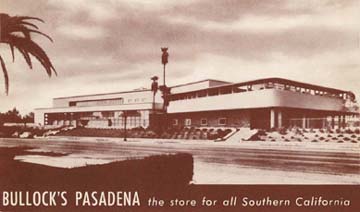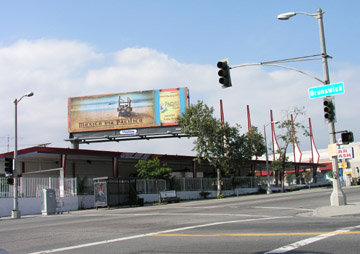
The scene of the other shoot-out, halfway up the 1800 block of North Argyle has, as have so many of 47project’s subjects, become freeway fodder:
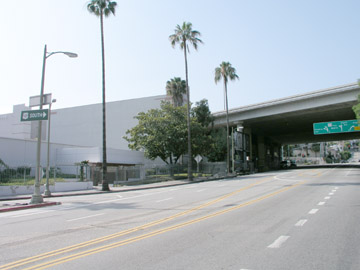


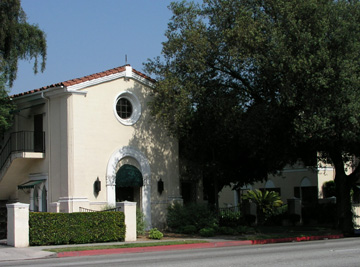
Whether suicide is at the top of your list of things to do, or a few items down, believe me, there are worse places to do it than at Ives & Warren. Frederick Kennedy designed this gorgeous Spanish Eclectic basilica in 1929-for once, we applaud stucco-and it remained Ives & Warren until taken over by the Pasadena Conservatory of Music in 2001. (Kennedy is best known for his work on Pasadena’s 1925 First Baptist, National Register, sure, though that hasn’t half the cool lyricism of this building.)
Much of the interior has been gutted, save for a few interior columns with some nice curvilinear ornament. The thirty-foot central nave got a dropped ceiling, turning it two story: 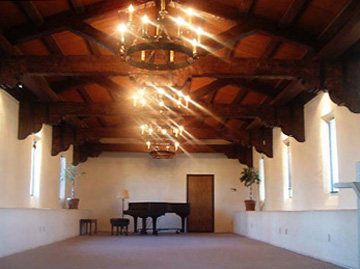
The building is still lovely, though, and the courtyard with its arcaded gallery still enchants, despite part of the mortuary being turned into a nail salon, and Hill having become a major thoroughfare. I can assure you, though, that Mr. Rawles had a beautiful service.
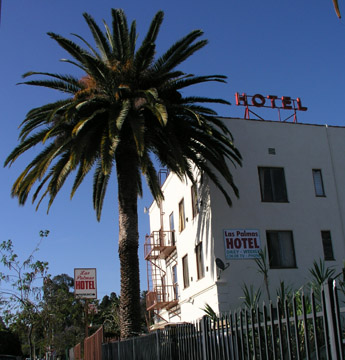
The Las Palmas is best known as where Richard Gere rescues Julia Roberts from the lumpen whoreitariat that is our lot. Worth seeing for the shot of the old neon that used to grace the pole outside, since replaced with backlit plastic.

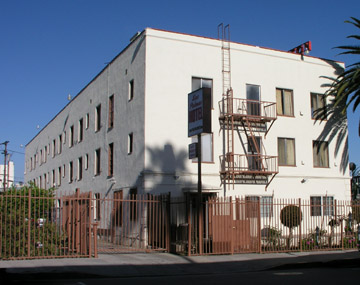
A taste of Old Hollywood: nothing says Old Hollywood like a punker with a big mohawk in front of the Las Palmas. Depending on your definition of Old Hollywood, of course.
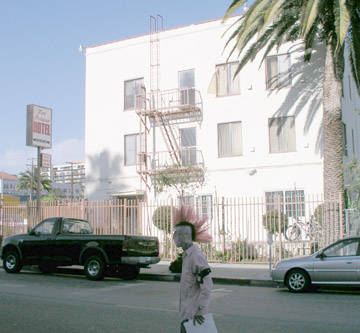
Whittier, 1947. Orange and avocado groves were being gobbled up by tracts. So when the Russian Boar weren’t busy rooting out roots and rutting with blood-crazed feral razorbacks, they were getting cranky about the encroaching subdivisions. Thus they’d thunder through backyards, letting housewives chill to the sound of them sharpening their whetters on their lower tusks.
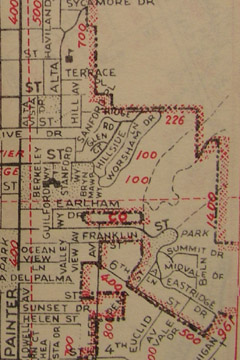
(Note Valley View a little southwest of center. Sure, Whittier College has expanded and roads have multiplied, but it looks as though there are still some wilds nearby – take care, beasts of the wild, the locals’ve got Acts 7:42 under their belts-or do they see in themselves II Pete 2:12?)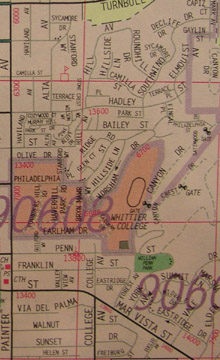
Can only assume they dug a big pit and Hawaiian’d this noble brute. Maybe made some summer sausage. My heart goes out to you, O Terror of Orchardale.
The scene of the crime – amazingly, still a printer’s shop. 821 is on the far right.
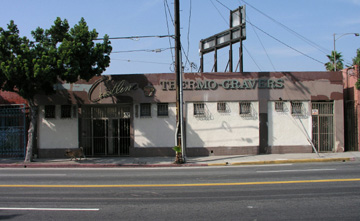
While post-47, a pic of the cut-out signage:

Much of this area was demo’d for freeway construction. Had the 110 had been built a hundred feet to the west, we would have lost the Veckoblad HQ. Instead, this Utter-McKinley mortuary was sacrificed for an overpass abutment:
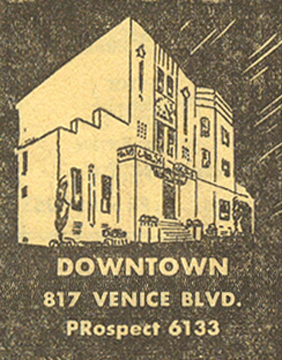
Looking up Cherry, a quiet residential street, now neither, scene of the watch drop:

The area bounded by Pico, Figueroa, Washington and Burlington:
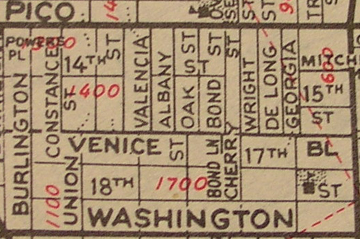
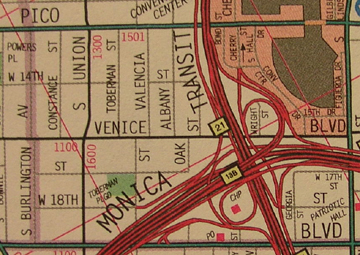
The Parzyjegla home – the 400 block of Jefferson was also eaten by the 110.
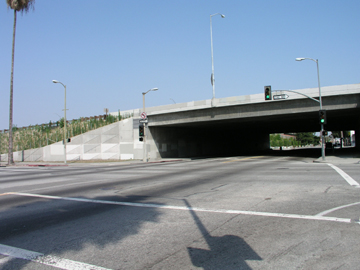
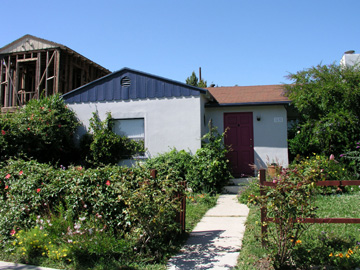
A modest house. Who’da thunk it fulla clams. Clams stink. Something stinks.
Missing moolah. Accented callers. We know about those accented callers. Bruno Hauptmann was one.
[While here at 47hq we leave the day’s events suspended in time, Bardin’s juicy tale cries out to be heard: The question stands-noone pulled down this sort of action in LA, so who tipped the crew? Or were these Indy-savvy boys out from the Hoosier state for a business/pleasure vay-cay? The FBI didn’t even look into it-they were curious about the interstate transfer of a large sum of cash, not the robbery. Bardin stated that the money was going to pay taxes, but, uh, had less of an explanation as to why he didn’t put that money in a bank. Probably had something to do with his background as a WWII-era beer-peddling black marketeer, and fellow traveler in the famously corrupt Democratic machine out Indiana/Illinois way. He bought the brewery from Democratic National Committeeman Frank McHale, with money from Democratic National Chairman Frank McKinney and, after serving a six-month Federal prison term in 1948 on the charge of putting 12-ounce labels on bottles actually containing 11 ounces of beer {hanging’s too good for ‘im!} finally got popped in ’52 by Repub Senator John Williams for concealing $231,000 of his 1946 income from his return.]
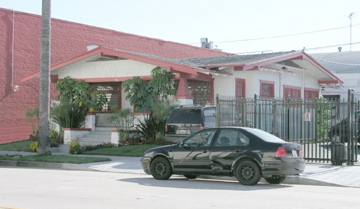
Here, however, is what’s become of Stanhope’s house up the street at 833:
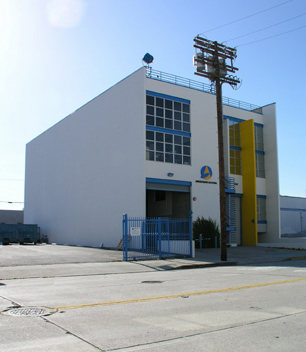
Why did these two tussle? Consider: Casper, a ghost, like a white sheet, dig. And Stanhope, player in 1947’s lambast of the Klan The Burning Cross. I seeeee.
(Burning Cross was shot at Ren-Mar Studios [nee Metro Studios] across the street at 846. Must be nice to walk to work.)
But by the end of the war houses had sprouted up everywhere. They’re all still there.
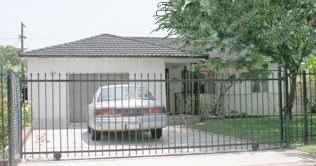
Some things are eternal-like a son changing the locks on his mother on Mother’s Day. Other things change-a street’s worth of garages become extra rooms (above). Ailing jetliners start falling on you instead of test planes. Right nearby the Valhalla Cemetery’ll haul off and expand (giving pilots of ailing jetliners more room to ditch). But the houses remain relatively intact, and every one, every single one, is there because of Lockheed. After all, during the war Lockheed had more employees than there were residents of Burbank and North Hollywood combined.
What’s most shocking about the area is that there’s no physical remnant of the mighty city that was the Lockheed facility. The unbelievable loss of the Earhart/Hughes hangar in 1998 was right in line with the mindset that Lockheed, the Airport Authority, and the City of Burbank maintain: to hell with our aviation history. The most super-secret of super-secret development buildings, the “Skunk Works,†whence came our first fighter jet (the P-80), the U2 spy plane, the Polaris and the Stealth, unceremoniously demolished. And that Building 85 was demolished by the city when it entered into the business of funding, of all people, the Hilton family? Let’s not even talk about that.
Thankfully, around the corner from the Bryans, a ’50 Roadmaster keeps a bit of the bygone spirit of the area alive.
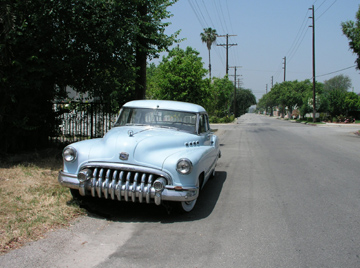
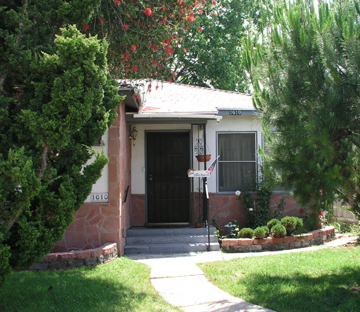
In their size and shape and arrangement, the houses along Marine all oozed prewar. But then, they all looked new as well. I chatted up a neighbor. Yes, her house was built in the thirties, the whole street was. Really, I said. There have been some-changes. Oh yes, she replied, we did ours in ’86. The people across the street there just did theirs.
So. Stucco and plastic windows are something you “do.†You just call someone up and say “I’d like to do my house,†and they’ll know exactly what you mean. They’ll come over and your house will get “did.†Nearly every visible trace of 30s Wilmington, borne of the 1932-discovered 2.5 billion barrel Wilmington Field (third largest in America), has been wiped from the landscape.
As to what Betty’s outfit signifies we can only conjecture; what types of costume (and their import) hung in the closets of 1610 is a matter of further fantasy. How had Mrs. Foley puzzled out her daughter’s dangerous games? Dear Myrtle must have filled her head with ignis fatuus to dispel any disquieting truths. Perhaps we can channel her spirit (which like said pale light hovers over the marshy oil fields) and pry some secreted tale from her misty midst.
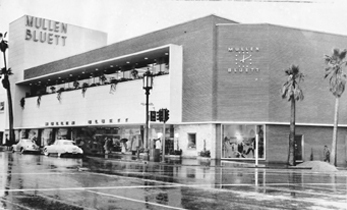
Stiles Clements’ Mullen & Bluett building, 1949, 5570 Wilshire, built in the Late Moderne, a style that typified the optimistic postwar building boom. Note the sexy geometric volumes and eyebrow canopy. Mullen & Bluett is a perfect example of the Miracle Mile’s auto-oriented “linear downtown,†as Reyner Banham put it. Think Wayne McAllister’s Bob’s Big Boy in Burbank or Wurdeman & Becket’s Bullocks Pasadena. Legacy Partners of Irvine are razing this building and replacing it with a 197-unit apartment/retail thingy that resembles the lowest common denominator of faux-Miami Deco. (Their next project is enveloping the Art Deco Desmond’s tower in nine stories of apartments.) I say go check M&B’s roman brick & flagstone façade and copper beveled display windows while you still can-it’s too late to admire Clements’ 1936 masterpiece of streamline KEHE building, recently demolished by LAUSD, or his equally unbelievable Coulter’s, once across the street.
This is the Bach Auricon Inc. building, 1954, 6900 block of Romaine at 900 block of Mansfield:
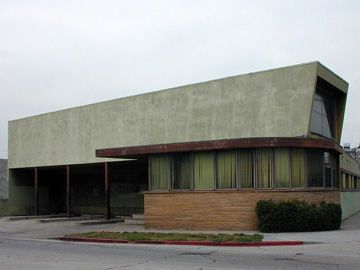
BA are incredibly important in the history of filmmaking, especially as regards TV newsreels and documentaries. Auricon was a semi-self-blimped single system that recorded optical or magnetic sound on film, allowing our cinema-verité pioneers to shoot with a lightweight, maneuverable, quiet camera. Logos for Modulite, Cine-Voice, Datasync and Filmagnetic are still on this building; rumors of its impending demolition abound. This is correct, original Old Hollywood in the way a thousand trips along our current Hollywood Boulevard can never be.
(A photographic addtion, in reference to the posted comment:)